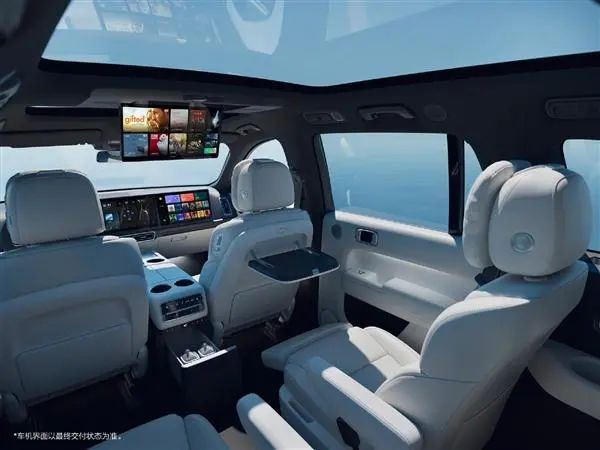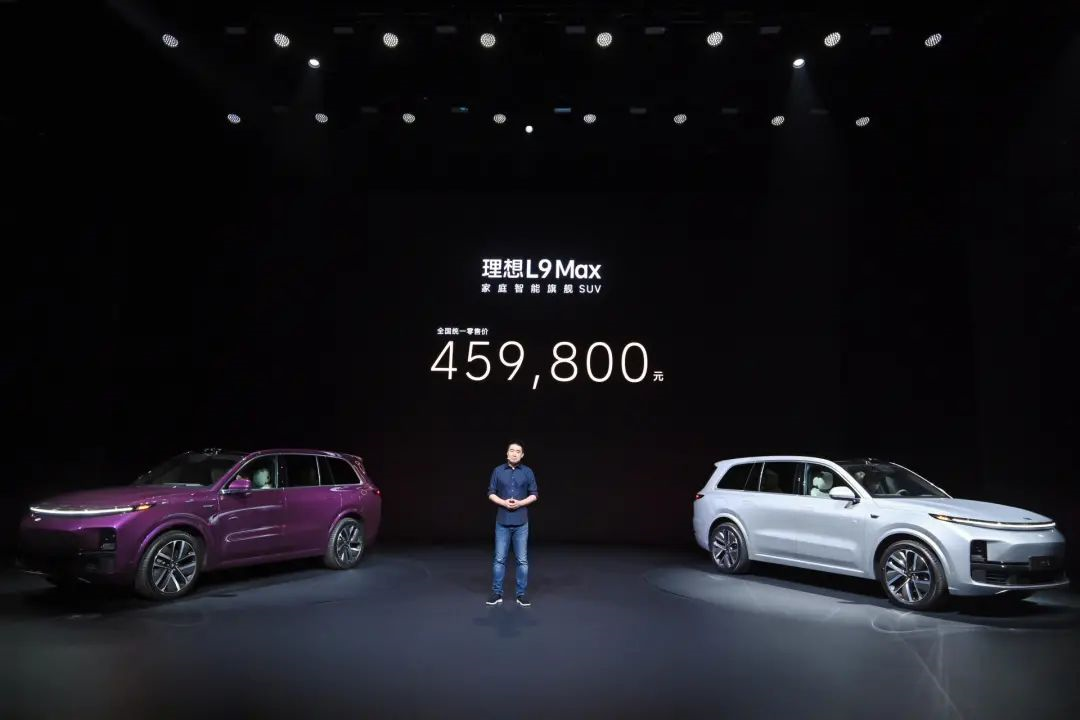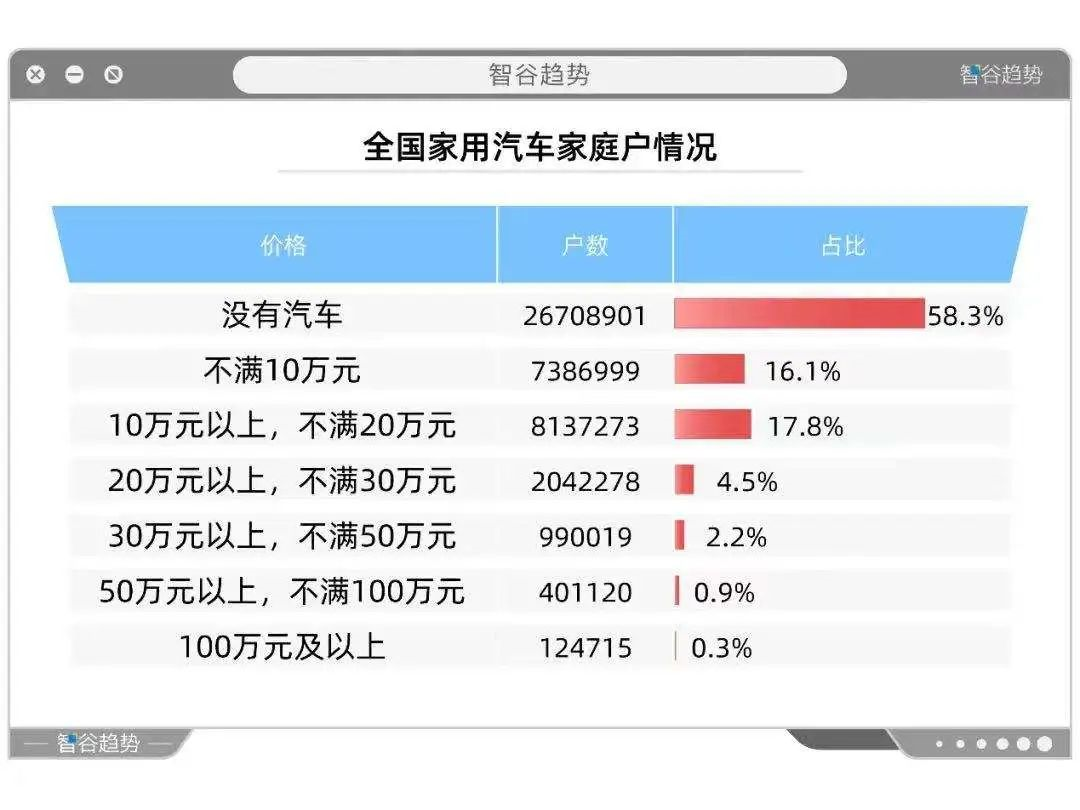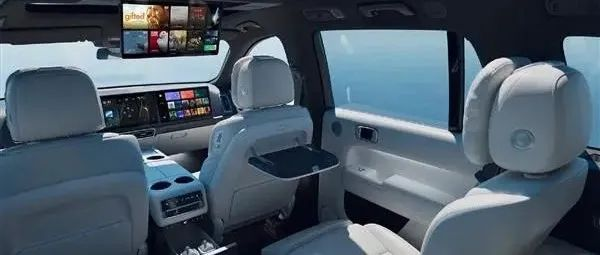- 第二是在保证产品品质的前提下,通过整合供应链、优化生产流程等方式,实现成本控制。
李想提到,理想汽车也采取了苹果的思维方式,尤其是在成本控制方面,理想汽车做得相当好:「我们做好自己的产品,然后研究整个供应链,找到我们能够控制的地方,实施自主研发,比如自主研发电池管理系统等等,从而实现成本控制。」
此外,李想还强调,理想汽车的产品战略一直是「追求极致的用户体验」,这是理想汽车在产品研发、工艺制造、售后服务等各个环节中的一贯追求。
至于 L9 的「100 项旗舰配置」,李想解释说,这并不是简单的配置叠加,而是理想车友们长期反馈及需求积累后的体现:「我们尊重每一个用户的需求,实现每一个符合产品战略的需求点。」
The second is a very unique innovation in terms of experience and technology.
“I think this is the core of everything Apple does, letting you spend a little more to get the ability you could only dream of having in the past, which would cost several times the price.”
People always seem to think that Apple products are a bit expensive, but is that really the case? For example, when iPhone4 was released in 2010, it was priced at 4999 yuan, while the Nokia N97 was priced at 8999 yuan, but the N97 was actually much rougher than the iPhone4. Only Vertu can achieve the same level of refinement as the iPhone4, and its price is around 30,000 to 100,000 yuan.
The MacBook Air sells for seven or eight thousand yuan. If used for office work, it basically achieves the overall experience of a PC notebook priced at 15,000 to 20,000 yuan, with even better workmanship and twice the battery life.
A conventional laptop may cost only five or six thousand yuan, but what Apple does is to encourage people to reach for a much higher level of product experience and detail, which is the core concept of Apple.
In Li Xiang’s view, although Apple’s products are relatively expensive, their cost performance is actually very high. “This is different from the cost-performance represented by Chinese companies making some standardized products at very low prices, these are two different cost performances.”
“To achieve this, there must be a lot of innovation in technology and experience for customers to accept it.” Li Xiang stressed again and again, “This is how we understand Apple, and we will adhere to this approach.”
For example, in the past, luxury brands offered high-quality audio systems for 60 to 70 thousand yuan. In the Chinese market, there were only a few hundred sets of optional equipment sold each year, and they appeared in different car models, each of which had to match different R&D costs. This is not necessarily price gouging, but a commercial model, and each set of speakers must share a lot of R&D costs.
On the other hand, the L9 from Li Auto provides a 7.3.4 audio system that comes standard on every car. If 150,000 L9s are sold each year, the cost per car may only be 100-200 yuan.
Similarly, the starting price of the Li ONE is similar to that of the Audi Q7 (in the European and American markets), but the Audi Q7 has four-cylinder gasoline/diesel, six-cylinder gasoline/diesel, eight-cylinder gasoline/diesel, and hybrid powertrains. Its seats come in a five-seater version and a seven-seater version, and the five-seater version also has various different configurations.
If we divide the R&D costs for different seats and configurations based on the global sales of 3,000 to 5,000 Audi Q7s, the cost per car will definitely be higher. However, the Li ONE only has one set of specifications, and selling more than 10,000 cars per month makes a huge difference in cost.
 “So we can boldly use this approach to make these products that were previously considered unattainable, costing more than 1-2 million yuan, available at the price of a luxury midsize car.” Li Xiang has basically explained the pricing logic and cost control method for LI L9.
“So we can boldly use this approach to make these products that were previously considered unattainable, costing more than 1-2 million yuan, available at the price of a luxury midsize car.” Li Xiang has basically explained the pricing logic and cost control method for LI L9.
This also aligns with LI’s chosen path in “Wei Xiaoli”, where LI is the only brand that relies on a single model for combat, adhering to the “pack tactics” era by resolutely choosing “one good move, eat all” strategy. LI’s product strategy is also announced to be in the range of 200,000-500,000 yuan, with one heavyweight product placed in every 100,000 yuan interval.

“We have changed many features, configurations, and even models that were previously thought to be unattainable into something that requires only a little effort to obtain. This is the core concept of LI’s products and configurations, and it is a true tribute to Apple’s choice from the heart.”
In fact, Apple also once struggled with its bloated product line. After Jobs cut 70% of the product line, he clearly chose the “hit product strategy.” Apple’s products became much fewer, and the company team’s goals began to become clear- to make every product a great product.
As Li Xiang said, this hit product strategy cannot cover the entire market, but the benefits are greatly advantageous in economies of scale. However, the premise is that the products using this strategy must have significant economies of scale to improve bargaining power.
In the frenzy of “attacking higher price points,” the “cost reduction” effect that’s presented may be another false prosperity. This is another question that Li Xiang needs to answer – how to ensure “scale”?

What Tesla Has Done
When it comes to reducing costs, Tesla has gone further and more insane.
As we all know, Musk has an extreme admiration for first principles thinking. Most of the time, we think by analogy and reasoning, which is essentially imitating others’ methods with slight modifications. But Musk believes that first principles thinking is very important, especially when it comes to achieving an unprecedented field.
First principles are a quantum mechanics principle, and Musk focuses on its core thinking of “deducing based on the essence of things.” The opposite of this core concept is “empiricism,” which is “standing on the shoulders of giants to view the world.”This approach to cost reduction, Musk has taken it to the extreme. For example, in the battery section, which accounts for about 30% of the cost. Some say the cost is about $600 per kilowatt hour and is expected to remain high in the future. However, Musk thinks differently. He used first principles thinking to explore what materials make up the battery, broke them down into various raw materials, and analyzed the spot market value of each. The conclusion was that the cost was $80 per kilowatt hour.
At the 2020 Battery Day, Tesla announced the 4680 battery technology, which was another major contribution to cost reduction. The range increased by 16%, but the cost per kilowatt hour decreased by 14%. At the same time, the manufacturing process was simplified, and the production capacity of the production line increased by a factor of 7, with an investment cost per gigawatt hour of production capacity decreasing by 75%.
At the Tesla shareholders’ meeting last October, Musk further announced his “Five-Step Plan” to reduce battery costs, covering five major areas: battery design, battery factory construction, positive electrode materials, negative electrode materials, and vehicle integration. These will reduce Tesla’s per-vehicle production costs by 69%.
In addition, Tesla has simplified its vehicles by removing almost all of the hardware that can be removed, and switching suppliers after localization is another way to reduce costs.
From the market perspective, since its release in 2019 with a starting price of RMB 328,000, the price of the Model 3 has been lowered several times, dropping to as low as RMB 235,900. Although it has returned to RMB 279,900 due to factors such as subsidy reductions, chip shortages, battery shortages, and rising raw material costs, it is still much lower than the initial price. If the price of the Model 3 continues to fall in the future, it will touch more mainstream gasoline-powered car consumer groups.
In response to Tesla’s price cuts, BYD once added an entry-level model. At present, the only competitor that may be able to compete with Tesla in terms of cost reduction is BYD. The biggest difference in Tesla’s price cuts is their scalability. This is also the root cause of the inability of independent car brands to follow suit.
Through cost reduction and increasing software services, Tesla has raised its gross margin to far above the industry average. According to Tesla’s first-quarter earnings, its gross margin reached an astonishing 32.9%. For example, the gross profit of the standard version of Tesla Model 3 is as high as $7,000 per car, equivalent to about RMB 50,000.自主品牌向来擅长降低成本。需要警惕的是,当特斯拉一边创新一边降低成本时,如果竞争对手只能通过提高性价比来竞争,那么就退回到了以往的竞争老套路,难以提高利润。李想认为,自主品牌的性价比与苹果的性价比不同,不同的成本降低方式也会对企业自身的收益产生不同的影响。
结尾语
在汽车行业正在关键时刻向“新四化”转型时,要求车企(尤其是已经拥有大量产品线的传统车企)像理想汽车一样按照苹果的方式操作不现实。但是,尽可能降低成本确实是当下新能源汽车的最核心历史使命,最好是结合技术创新的方式来降低成本。
如果把目光投向1900年,当时电动车和燃油车并存,而美国三分之一的汽车是电动车。然而,在1908年福特T型车诞生后,这种情况就结束了。在燃油车绝对成本优势的打击下,电动车销声匿迹,燃油车才真正进入了属于它的大爆发时代。
2021年,中国新能源汽车市场的渗透率从2020年的5.4%大幅提升至13.4%。乘联会预计,2022年新能源汽车销量将达到600万辆,渗透率将达到22%。在10-20万元的主流市场上,正面临着结构性机遇,这显然是一次与“成本控制”有关的竞争机会。
近年来,特斯拉所说的最多的不是赛博朋克的新技术,而是从电池到铸造车身一直在追求“降本”。早在2020年,特斯拉就计划在三年内推出以2.5万美元为价格的新车,大约合人民币17万。这与100多年前的福特T型车类似。
特斯拉的策略已经为众所周知。在领导着造车新势力的潮流和传统车企的竞争中,包括理想汽车在内的公司将如何应对呢?
This article is a translation by ChatGPT of a Chinese report from 42HOW. If you have any questions about it, please email bd@42how.com.
